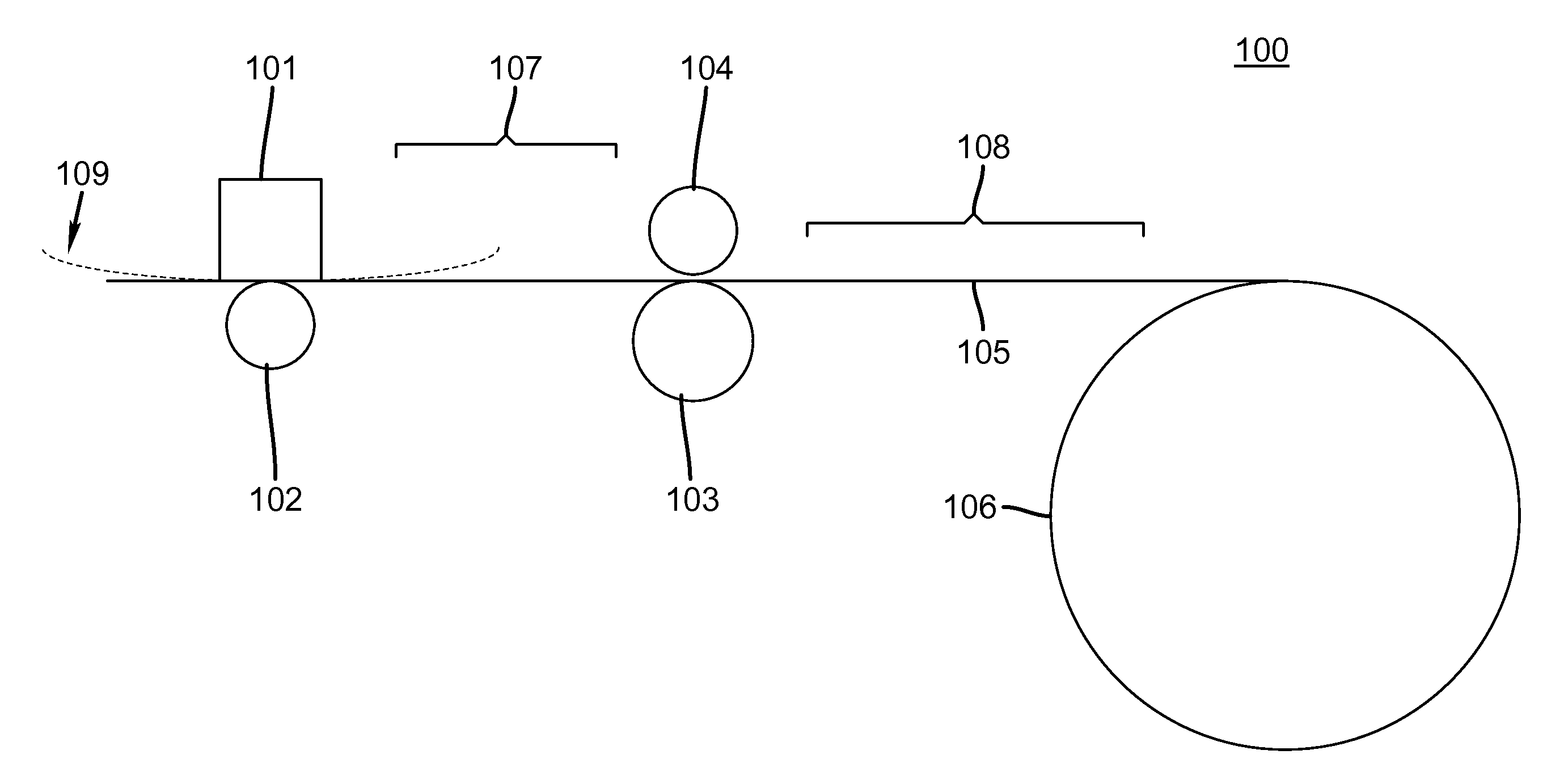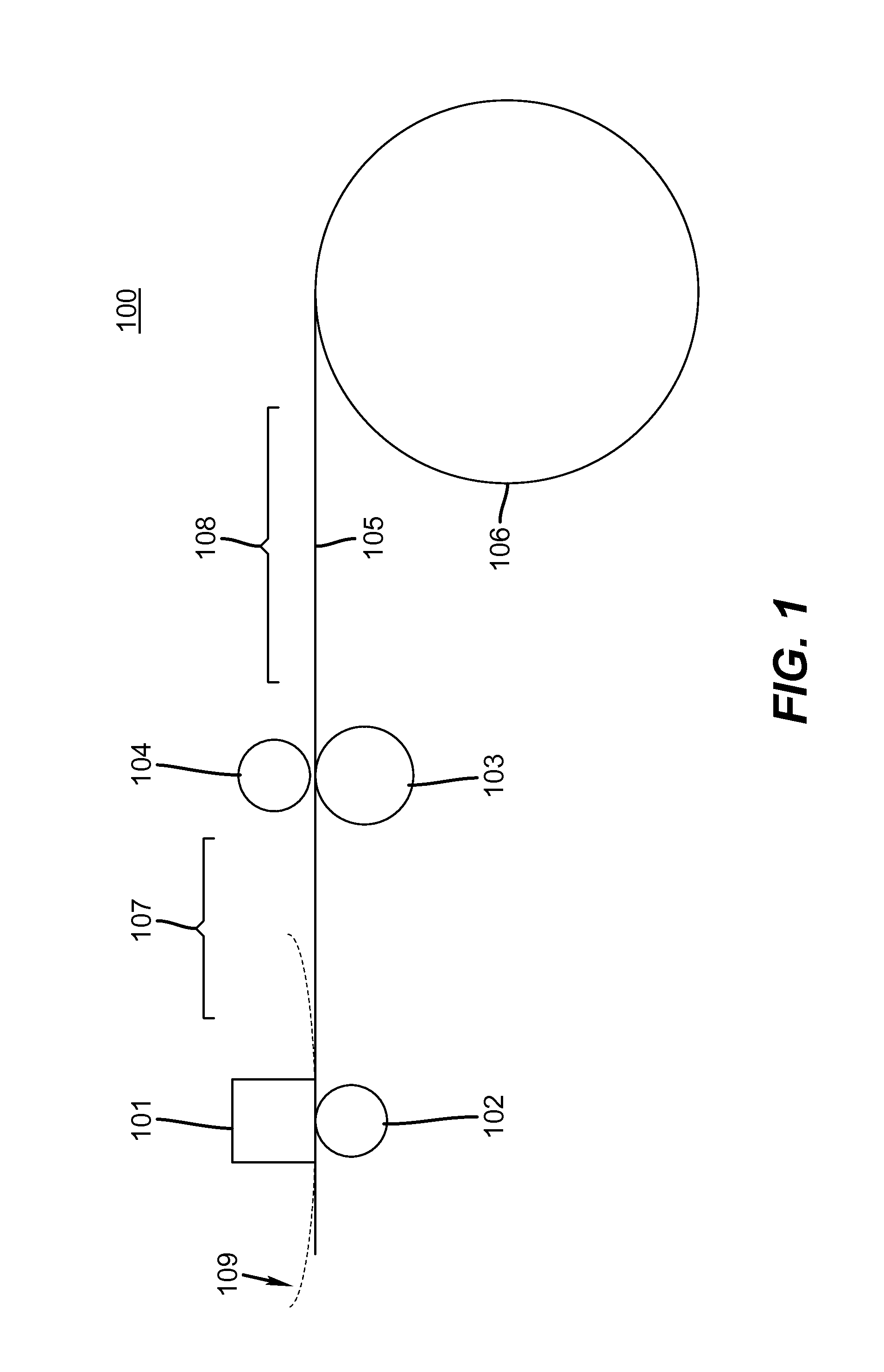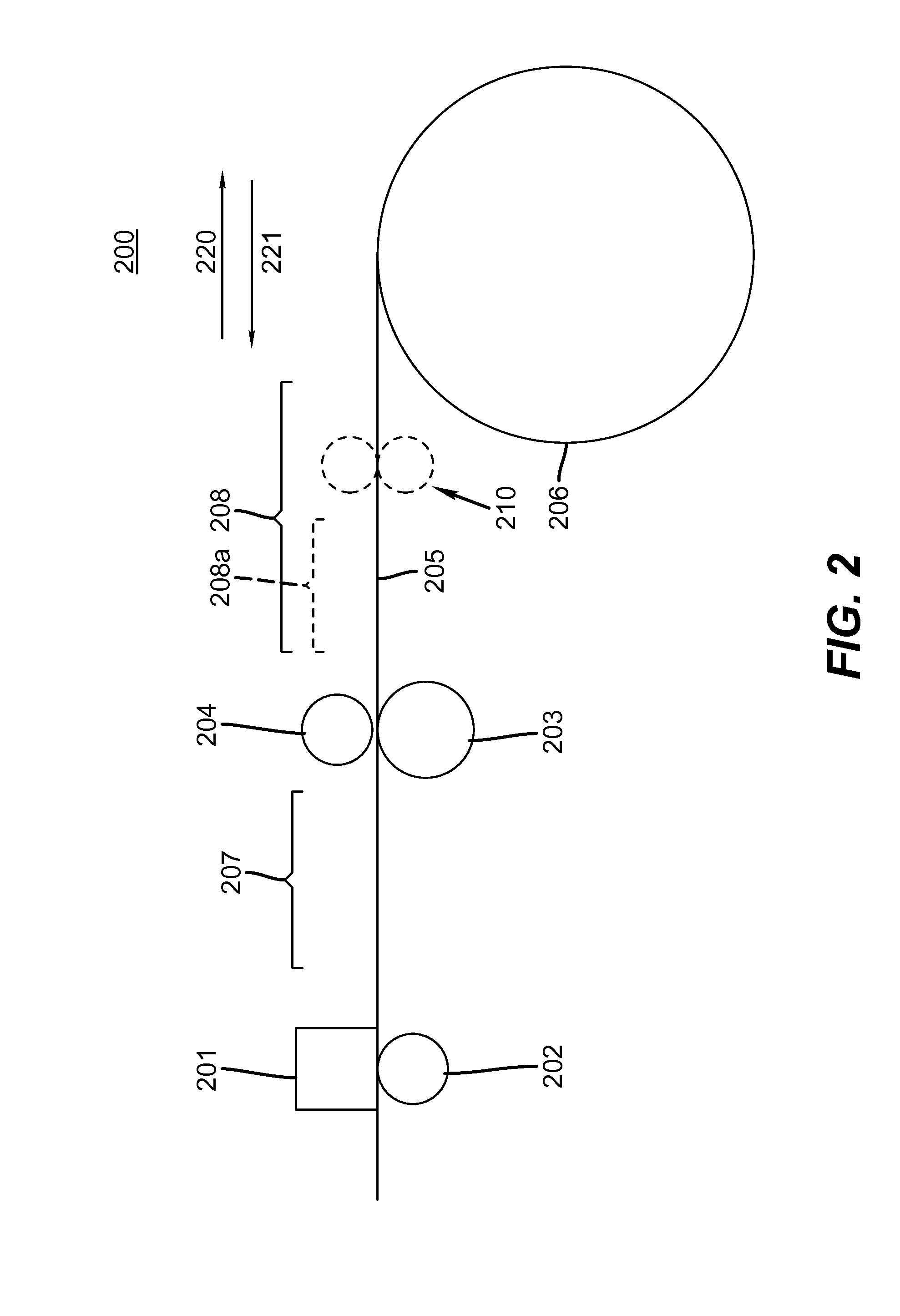Thermal printer
a printer and thermal technology, applied in the field of thermal printing, can solve the problems of unimproved method and visible impression marks, and achieve the effects of less aggressive grip, less impression marks, and controllable tension differential across the capstan
- Summary
- Abstract
- Description
- Claims
- Application Information
AI Technical Summary
Benefits of technology
Problems solved by technology
Method used
Image
Examples
Embodiment Construction
[0018]With reference to FIG. 1 there is illustrated a portion of a thermal printer's drive system. A roll 106 of receiver 105 is fed through a thermal printer 100 as shown by the receiver advancing past thermal print head 101, as fed by thermal roller 102, pinch roller 104 and capstan roller 103. Dye donor web 109 (partially illustrated) is applied onto the receiver in predetermined patterns, as is well known in the art. The receiver is iteratively reversed and printed during several color applications of the dye donor web in the predetermined patterns. Tension in approximate region 107 relative to approximate region 108 affect an ability of the capstan and pinch rollers to effectively control movement of the receiver therethrough.
[0019]A preferred embodiment of the present invention comprises a less aggressive capstan roller 103 design, as is illustrated in FIGS. 4A-B wherein a knurled pattern provides a spike free configuration that does not perforate a surface of receiver 105 as ...
PUM
 Login to View More
Login to View More Abstract
Description
Claims
Application Information
 Login to View More
Login to View More - R&D
- Intellectual Property
- Life Sciences
- Materials
- Tech Scout
- Unparalleled Data Quality
- Higher Quality Content
- 60% Fewer Hallucinations
Browse by: Latest US Patents, China's latest patents, Technical Efficacy Thesaurus, Application Domain, Technology Topic, Popular Technical Reports.
© 2025 PatSnap. All rights reserved.Legal|Privacy policy|Modern Slavery Act Transparency Statement|Sitemap|About US| Contact US: help@patsnap.com



